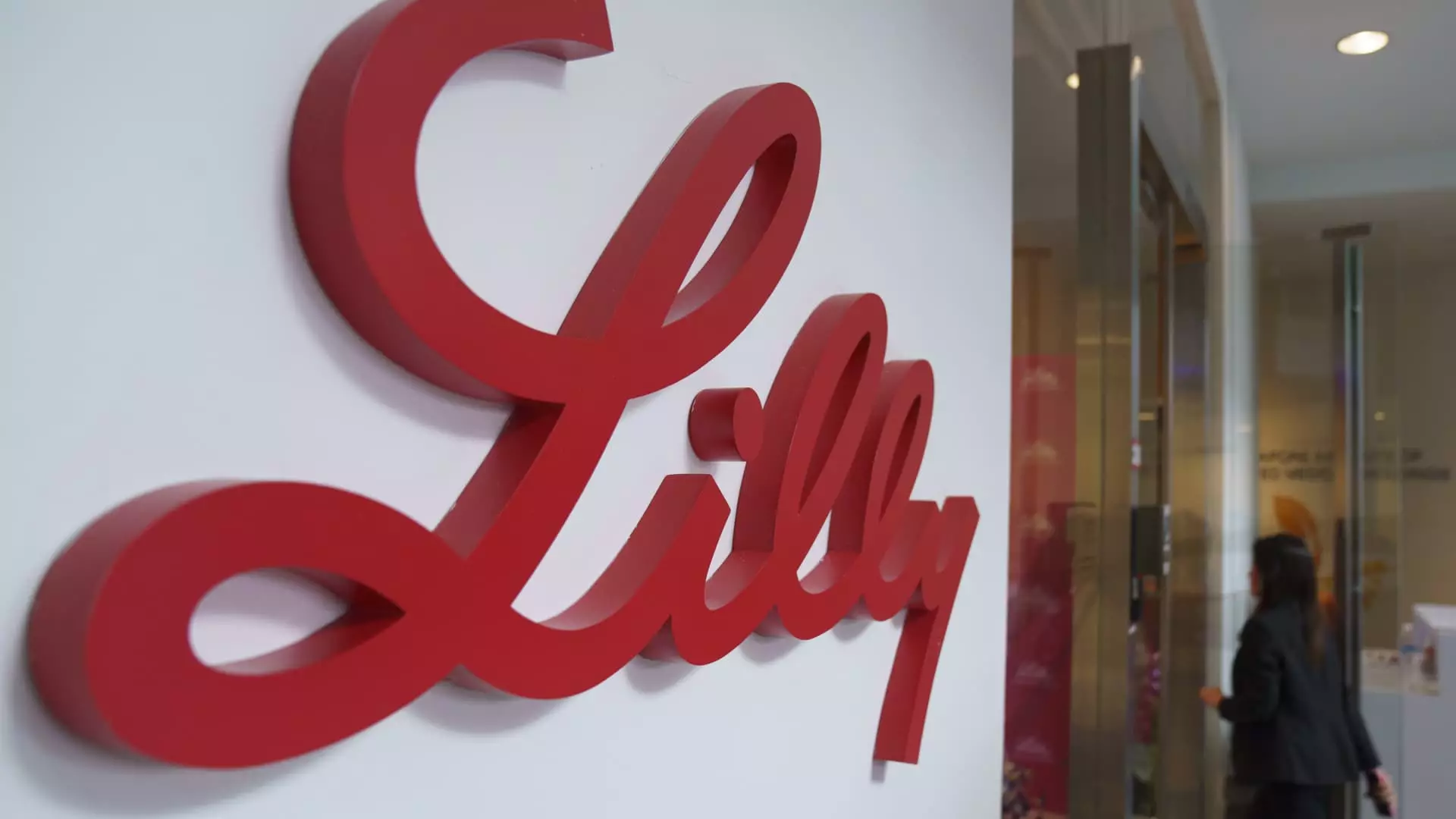On a recent earnings call, Eli Lilly announced significant revisions to its revenue expectations for the upcoming fiscal year. Originally projecting revenues between $45.4 billion to $46 billion, the pharmaceutical giant has now adjusted its forecast down to approximately $45 billion. This news resulted in a sharp market reaction, with Eli Lilly’s stock witnessing a decline of more than 7% in midday trading. Despite this setback, the revised figure still represents a notable 32% increase over the previous year, indicating that the company is not in a dire position but rather recalibrating its ambitious growth targets.
The downward adjustment in revenue guidance comes at a time when Eli Lilly is facing heightened competition in the lucrative diabetes and weight-loss market. With rivals such as Novo Nordisk making significant inroads, Eli Lilly has to navigate a challenging landscape where consumer demand is high, yet not as robust as previously anticipated. The company’s focus on boosting production for its incretin-based drugs, including Mounjaro and Zepbound, shows a proactive approach to addressing operational constraints and a commitment to meet the demands of the market. However, the stagnation or slower-than-expected growth in sales could indicate that Eli Lilly’s earlier forecasts may have been overly optimistic.
Despite competitive pressures, Eli Lilly is betting on enhanced manufacturing capabilities to optimize production of its popular obesity and diabetes treatments. CEO Dave Ricks underscored the significant increase in “sellable doses” expected throughout the first half of the year, which could help stabilize revenue growth moving forward. However, the market’s reaction suggests that investors are wary of the company’s ability to perform under competitive duress. Analysts had expected a stronger revenue outlook, with projections of $13.94 billion for the fourth quarter, highlighting a gap between investor expectations and the company’s delivery.
To strengthen its position in the market, Eli Lilly is also developing a more convenient oral obesity medication. Expected to be approved early next year, this new offering could reshape patient experiences and potentially regain lost market share. However, it remains critical that this innovative approach successfully translates into commercial effectiveness. Ricks expressed optimism about the growth trajectory of the incretin market, which has seen a remarkable 45% increase compared to the previous year. Yet, the challenges in channel inventory levels suggest that supply chain management and inventory strategy would need immediate improvements.
Looking forward to fiscal 2025, Eli Lilly anticipates sales in the range of $58 billion to $61 billion, despite the recent setbacks. This projected growth reflects the company’s resilience and the underlying strength of its product portfolio. Nevertheless, the adjusted revenue guidance serves as a reminder of the unpredictable nature of the pharmaceutical landscape, where emerging competitors and changing consumer behaviors can impact even established players. Eli Lilly’s journey ahead will depend significantly on its ability to adapt to these dynamics while maintaining the momentum needed to realize its ambitious goals.

Leave a Reply